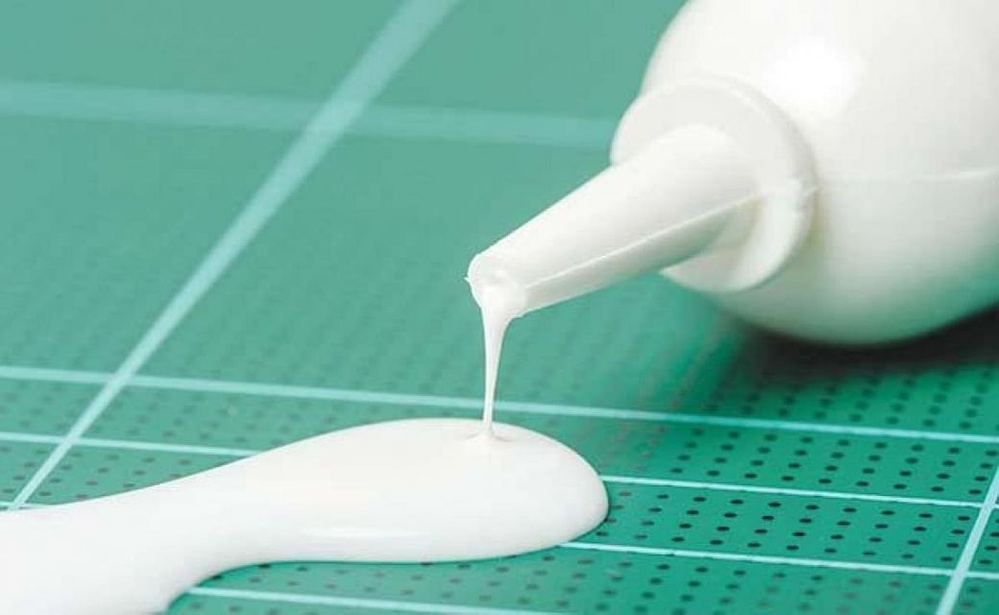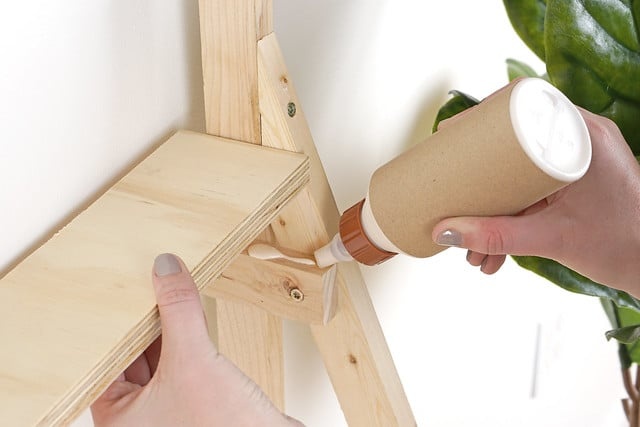PVAC adhesive: an all-purpose glue and why is it still popular?
- Common types of PVAc adhesive
- Types of PVAc's application
- Areas of PVAc's application
- Properties of PVAc adhesive
- Benefits of PVAc adhesive
- Downsides of PVAc adhesives
- Recommendations for PVAc's application
- Where to buy PVAc adhesive?
PVAc adhesive is one of the most popular and widely used adhesives in the world. It was invented simultaneously by two chemists in different countries: German and Korean researchers who had been working on the potential product in their own labs. That's how the story of the development of all modern adhesives that are widely used today began. After the invention of the PVAc adhesive, US companies began active production of polyvinyl acetate. The PVAc first appeared on our market in the 1970s.
The PVAc adhesive produced today has a different composition from the adhesive invented in the early 20th century. Today PVAc adhesive is produced on the basis of polyvinyl acetate dispersion, polymerization accelerators, hardeners, stabilizers, preservatives and other additives. Industrial PVAc adhesive is manufactured as a white viscous liquid, resistant to environmental influences. The adhesive film of a good quality adhesive becomes transparent after drying.

Common types of PVAc adhesive
There are several types of PVAc, depending on their purpose:
- Common household glues are used to glue pieces of paper and cardboard together, or to stick them to concrete, wood or plaster surfaces.
- Office glue is good for gluing paper and cardboard products, and children often use it at school. It is produced in small tubes with or without a brush inside.
- Wood glue is used in the manufacture of wood products, to bond all types of wood and plywood or boards in the manufacture of flooring, etc.
- Super PVAc adhesive is widely used in the manufacture of furniture, the installation of cladding, the laying of tiles, laminate or parquet flooring.
- PVAc dispersion is commonly used in the printing, footwear and textile industries. This dispersion is also used in the manufacturing process of the adhesive itself.
- Multi-purpose adhesives provide good adhesion to a variety of materials. They are also added to concrete mixes to improve their properties.
We should also mention wood PVAc, it has several types of water resistance for different purposes of application.
|
D1 |
For rooms with humidity up to 15% |
|
D2 |
For rooms with humidity up to 18% |
|
D3 |
For rooms with prolonged exposure to moisture |
|
D4 |
For humid rooms and exterior use, such as doors, windows, etc. |
Types of PVAc's application
PVAc can be used to bond various types of surfaces such as paper, wood, fabric and other materials. This type of a multi-purpose adhesive is still very popular. PVAc adhesive is used in many industries, and there is a wide range of different brands of this product available on the market.
Areas of PVAc's application
- In the printing industry, to glue sheets of books, magazines and other printed products together.
- In the woodworking and furniture industry.
- In construction work.
- In the textile industry.
- In the manufacture of paints and varnishes.
A certain type of PVAc adhesives is used in each area, the description of which is given above.

Properties of PVAc adhesive
This adhesive is a ready-to-use white viscous liquid. Just mix it well before application, there is no need to dilute it or add any other components. High-quality polyvinyl acetate adhesive has a homogeneous consistency, with no foreign particles and clumps.
Main technical properties of PVAc adhesive:
- viscosity is 40-100 Pa*s;
- dry residue is 51±2%;
- pH is 4±1;
- open time is up to 8 minutes;
- operating temperature is +15...+35° C;
- consumption is 90-180 g/m2.
Polyvinyl acetate adhesive in non-flammable, therefore it is completely safe in terms of fire protection. The adhesive is temperature resistant and provides a strong and durable bond line. Although it is produced as a white liquid (with its shades ranging from very white to cream), its film becomes transparent after drying, so that products glued with PVAc look nice and neat.
Benefits of PVAc adhesive
PVAc adhesive has a number of advantages, which include the following:
- It is multipurpose because polyvinyl acetate can be used not only in production facilities but also at home.
- It contains a highly concentrated polymer.
- After drying, its bond line is still flexible, transparent and highly durable.
- It is applicable on industrial equipment, can be used in hot and cold presses.
- It has high adhesion to a wide variety of materials.
- There is no need to use protective equipment as the adhesive is environmentally friendly and non-toxic.
- It has certain water resistance properties.
The quality of the adhesive is directly related to the production technology and certain components of the product. The main components of PVAc adhesive are polyvinyl acetate, water, special additives and plasticizers. Additives improve certain properties of PVAc adhesives, allowing them to be used effectively in a variety of applications. Plasticizers are added to the adhesive mix to give the product some elasticity, while stabilizers are used to extend the shelf life of the adhesive.

Downsides of PVAc adhesives
Although even ordinary PVAc has D1-D2 water resistance, if it is going to be exposed to water or high humidity, it is advisable to choose PVAc with D3-D4 water resistance. Moreover, to make the bond really strong, it is recommended to place the pieces to be bonded under the press for a while or to press them tightly together with your fingers, which requires additional time. If you accidentally apply too much adhesive, it may run down and drip until it dries, making the product look unattractive. Make sure you do not apply too much adhesive and that you spread it evenly over the surface.
Recommendations for PVAc's application
Before applying PVAc, it is necessary to prepare the surface, clean it from dirt, and make sure it is completely dry. You can apply the adhesive using special equipment, a roller, or by hand.
If you accidentally apply too much adhesive, be sure to remove the excess for a more reliable bond. Use a damp cloth to remove excess adhesive from the surface. Make sure that the thickness of the adhesive film does not exceed 2 mm. If the adhesive is too liquid, allow the surface to dry after application and then glue the pieces together. For best adhesion, place the bonded surfaces under the press for several hours. It takes one day for the PVAc adhesive to dry completely. After the adhesive has completely dried, you can sand the bond line to remove the dry adhesive residue.
Lux-X specialists recommend to use PVAc adhesives at a temperature not lower than +10˚C, with humidity of the environment up to 80%. PVAc adhesives require specific conditions of use and storage. If a container of adhesive is left open or stored at a temperature other than the specified temperature, the adhesive may crust or separate into layers. Before use, carefully remove the crust from the surface and mix the adhesive well. If the adhesive has become too thick, add a little water and stir well before use. Find useful tips on how to properly dilute PVAc adhesive with water here.

Where to buy PVAc adhesive?
Lux-X offers a wide range of PVAc adhesives. Find detailed information about the technical characteristics of industrial adhesives here, and the types of adhesives made for wood and for printing industry.
You can get detailed advice on PVAc adhesives from LUX-X specialists by calling the phone numbers listed on the company's website or by using the feedback form.






